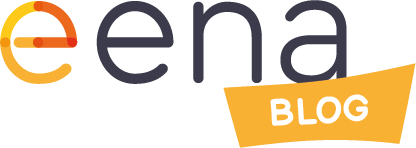A systematic approach to maintaining a high “Stridsvärde”*
As you might have learned from the session at the EENA Conference & Exhibition 2021 in Riga presented by Magdalena Robertsson Lind, COVID-19 created a need for new ways of performing under pressure. Due to this need, methods and models based on military experience and background found their way into healthcare and other civilian organisations.
Through our approach, psychosocial factors and well-being moved up the hierarchy. They became central aspects of the leadership and management during the pandemic’s initial phases, its prolonged aftermath, and reoccurring waves.
Well-being at work is a well-known and vital requisite for health, performance, resilience, staff retention and loyalty, to name a few positive outputs. If we feel well, we thrive and can manage even the most challenging situations and experiences. However, well-being can be a challenge under prolonged or intense stress. Pandemic or not, there are many sources of stress in everyday work life. And we have had a stress health issue in most Western countries for ages pre-COVID, and it is increasing.

Work-related stress is no longer just too much to do and too little time. The amount of information that we are exposed to, constant availability, increased cognitive and emotional load, etc., constitutes additive stress (many stressors at the same time) and/or cumulative stress (building up over time). We also have intense or acute stress that can become traumatic as its load supersedes the individual’s resources to manage it. And of course, it can be a combination of all of them. Low-intensity everyday stressors wear and tear over time and lower the threshold for intense or acute stress.
We are often provided with the caveman analogy, that is, that we evolved the fight or flight system to survive as all mammals. The argument is that we need to be more like a zebra, don’t activate the system cause the lion is there but wait until it’s attacking you. There are many good points to that, BUT stress is not just fighting. It’s present all the time. The physiological processes within the stress response are not just activated in the life and death scenario or when our minds trick us into believing its danger ahead. We start the system just by wakening up in the morning. The problem comes with all those low-level stressors accumulating, but we can manage it successfully when we balance the stress and recovery.

So, what to do? Well, as presented by Magdalena, we focused on identifying gaps in regular leadership and stress management. Unfortunately, some methods that worked well before the pandemic did not withstand the new load and had to be addressed differently. In addition, not all stress came from the apparent sources relating to the spread of the virus. For example, we faced a situation where there were a lot of knowledge gaps and conflicting information circulating. Hence, one strategy was to provide straightforward ways of communicating the most current and updated information in an easy-to-digest manner.
Early spring 2020, we started to measure “stridsvärde”, something we continue to do. We use a weekly digital form that is sent out to several selected sensors among the staff. The sensors make an assessment, based on their perception of their group that week, of the unit and individuals’ capacity to function both from a mental and physical aspect. Group assessments are, in this case, better than individual assessments since we can maintain integrity yet not be anonymous. Of course, anonymity might give less censured assessments, but with several employees, how do you know who to support if needed?
What we measure is the balance between demands and resources. The goal is to have as much as or more resources than demands. Furthermore, the goal is to keep a positive balance; if demands supersede resources, we might manage for a while (there is always a buffer), but we drain our resources over time.
We also assess Negative Impact Factors (NIF). Some factors are generic and some that are specific for the organisation.

In 2021 we worked with 11414, the police call center and their operators. They don’t receive the same acute calls as 112, but they have their share of challenging calls. When measuring their stridsvärde, we used the following generic NIFs; Workload, Conceptual (regulations, routines, procedures, and systems) and Moral (mood and psychosocial environment) and a specific factor called Emotional load, which refers to the content in calls. We also include a miscellaneous element, room to note if there is a factor not accounted for in the NIFs.
So, what’s the use of these strategies and methods? In the case of healthcare workers and the 11414 operators, we delivered increased awareness and focused on the importance not just on mental health as a whole but as a continuous and natural part of everyday leadership, both operative and strategic. The weekly assessment raised awareness and prompted group discussions that emerged naturally from employee and management initiatives. The data from the assessments were used as indicators of how well equipped the organisation is to function in the current state and in foreseeable and unforeseeable situations and, thus, an important base to make strategic decisions.
Back to the roots, that is the military
It all comes down to managing resources in a way that keeps you on top of the game. When time permits, get rest and recuperate. When it calls for action, be ready and vigilant. Sometimes the harsh reality calls for measures when poorly rested and unfit, so we risk performing at a sublevel standard, putting ourselves and the mission at risk. The same goes for any critical branch. It might not result in life and death situations, but the loss of loyalty, poor work performance (and quality), and staff leaving can be one consequence if we don’t address NIFs. This is transferable knowledge, strategies, and methods that work in different theatres.

By combining weekly measurements of stridsvärde of both the staff and management with experience implementing human security, we delivered a holistic approach to managing an organisation in the front line during prolonged load and lack of recovery. There are probably lots of successful experiences out there; this is one. And we are thankful and proud to have been able to share and make a difference in the organizations that we have supported.
References:
Magdalena’s Robertsson presentation “Maintaining physical and mental capacity to perform duties over prolonged time” at the EENA Conference & Exhibition 2021 in Riga, Latvia.
Check the presentation here and listen to the session recording here.
Authors: Niclas Wisén (PWELT-AB), Magdalena Robertsson Lind & Johan Robertsson Lind (Metis Services)
The opinions expressed are those of the authors and do not necessarily represent the views of EENA. Articles do not represent an endorsement by EENA of any organisation.
Share this blog post on:

